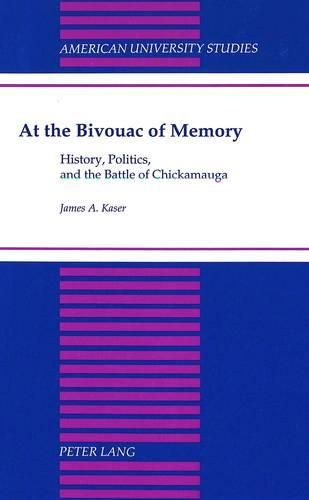Readings Newsletter
Become a Readings Member to make your shopping experience even easier.
Sign in or sign up for free!
You’re not far away from qualifying for FREE standard shipping within Australia
You’ve qualified for FREE standard shipping within Australia
The cart is loading…






Reinterpretations of the Civil War current in the 1880s and 1890s often included discussion of the Battle of Chickamauga. In retrospect, the battle was seen as a victory by both sides and was used to promote the popular theme that Union and Confederate soldiers had been equally noble and heroic. To aid in reconciliation, highly publicized reunions of Confederate and Union veterans were held on the battlefield and, in 1895, the ground was dedicated as the country’s first national military park, becoming a commemorative landscape promoting reunification. Utilizing battle accounts by members of the Twenty-first Regiment of the Ohio Volunteer Infantry and contrasting them with published histories of the battle, this study analyzes how personal memories of the battle were subsumed in the creation of a cultural myth driven by the political necessity of reunifying the country.
$9.00 standard shipping within Australia
FREE standard shipping within Australia for orders over $100.00
Express & International shipping calculated at checkout
Reinterpretations of the Civil War current in the 1880s and 1890s often included discussion of the Battle of Chickamauga. In retrospect, the battle was seen as a victory by both sides and was used to promote the popular theme that Union and Confederate soldiers had been equally noble and heroic. To aid in reconciliation, highly publicized reunions of Confederate and Union veterans were held on the battlefield and, in 1895, the ground was dedicated as the country’s first national military park, becoming a commemorative landscape promoting reunification. Utilizing battle accounts by members of the Twenty-first Regiment of the Ohio Volunteer Infantry and contrasting them with published histories of the battle, this study analyzes how personal memories of the battle were subsumed in the creation of a cultural myth driven by the political necessity of reunifying the country.